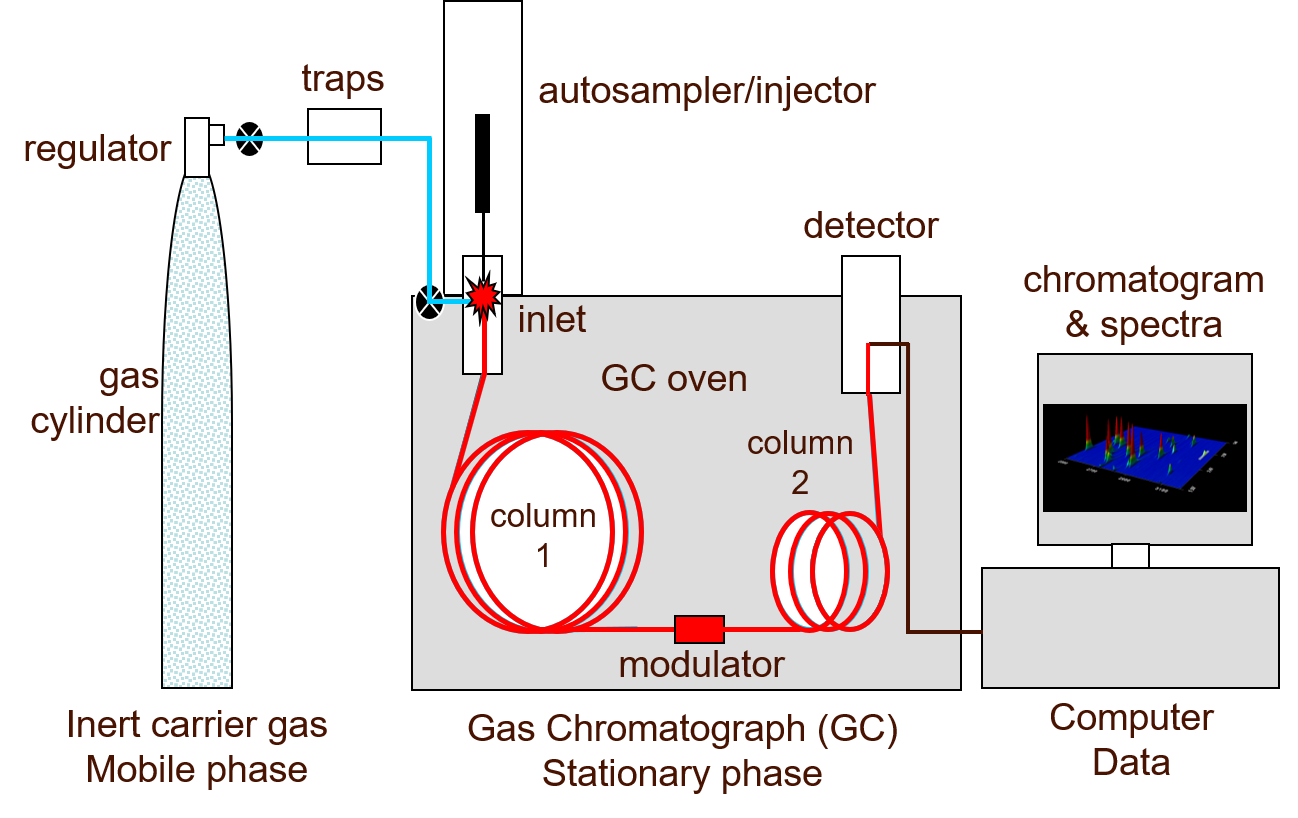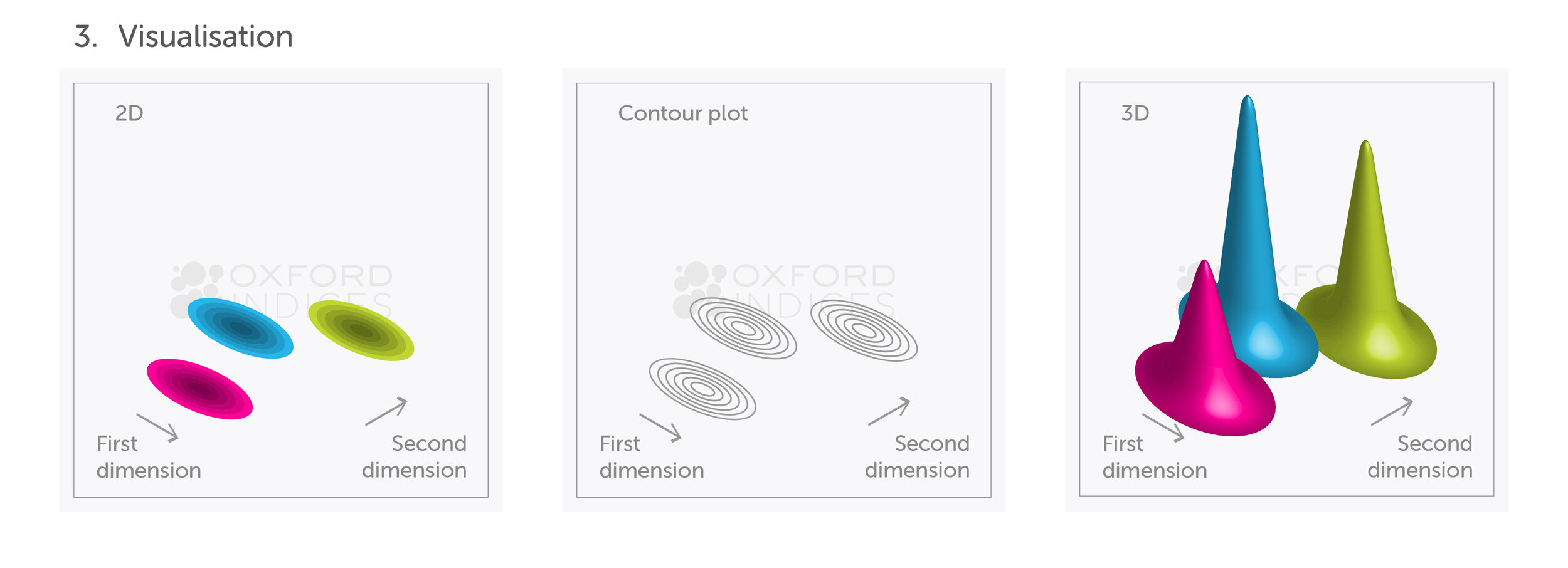How two-dimensional gas chromatography works
Two-dimensional gas chromatography (GC×GC) is a powerful separation technique, allowing to reach unique separation resolution. This technology is particularly well suited for the characterisation of complex volatile and semi-volatile mixtures. This high peak capacity results from the addition of an extra GC dimension. GC×GC can further offer structured separations into the available two-dimensional chromatographic space, supporting compound classification. With environmental and biological samples, multiple chemical components are eluting at the same time, resulting in overlapping peaks which could be easily missed on one-dimensional GC alone.
The power of one-dimensional GC-MS diminishes when high concentrations of matrix components interfere with low concentration target analytes (e.g. polychlorinated biphenyls, ignitable liquid residues and polycyclic aromatic hydrocarbons). It is also unable to differentiate between structural isomers.




